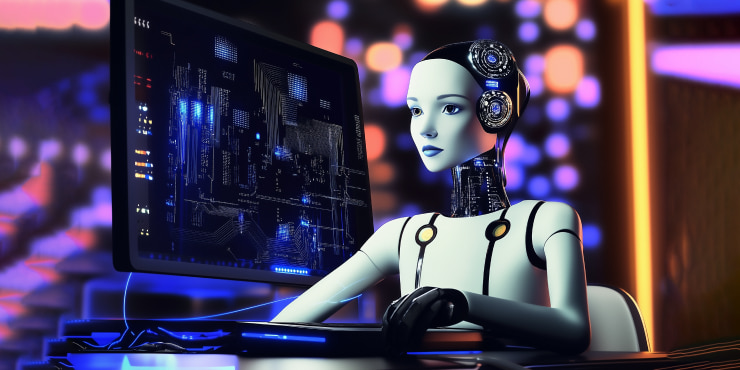The explosion of digital content has increased demand for high-quality video production across social media, entertainment, and marketing. AI-powered video editing tools are transforming how creators edit, enhance, and produce content by automating time-consuming tasks, improving efficiency, and enabling creative possibilities that were previously inaccessible. With AI-driven enhancements, content creators can now streamline workflows, generate engaging visuals, and optimize their videos for different platforms with minimal effort.
Key Features of AI-Powered Video Editing
1. Automated Editing and Scene Detection
- AI algorithms analyze raw footage to identify key moments, transitions, and highlights automatically.
- Intelligent scene detection allows the software to cut and arrange clips in a coherent sequence based on pre-set styles or user preferences.
- AI-assisted jump cuts remove unnecessary pauses, ensuring a smoother and more engaging final product.
2. Smart Color Grading and Enhancement
- AI tools adjust color balance, contrast, and lighting based on the video’s environment and mood.
- Deep learning models replicate cinematic color grading styles used in Hollywood films.
- Automated HDR (High Dynamic Range) enhancement improves brightness and clarity for professional-quality visuals.
3. AI-Generated Captions and Subtitles
- AI transcription services automatically generate subtitles, improving accessibility and engagement.
- Real-time translation capabilities enable creators to reach global audiences by offering multi-language subtitles.
- Adaptive text styling ensures captions blend seamlessly with the video’s aesthetics.
4. Object and Face Recognition for Intelligent Editing
- AI-powered tracking allows for automatic focus adjustments on people and objects in motion.
- Face recognition technology can enhance skin tones, remove blemishes, and apply virtual makeup.
- AI can replace backgrounds without a green screen using deep-learning segmentation techniques.
5. AI Voiceovers and Audio Enhancement
- AI-generated voiceovers provide natural-sounding narration for explainer videos and tutorials.
- Noise reduction algorithms filter out unwanted background sounds for clearer audio.
- AI-powered music selection tools suggest and sync background music based on video content.
6. Style Transfer and Visual Effects
- Neural networks apply artistic filters, mimicking styles from famous painters or cinematic effects.
- AI-generated motion graphics and transitions enhance storytelling without requiring complex manual animation.
- Smart slow-motion and hyperlapse adjustments ensure smooth playback even when speed is altered.
Advantages of AI in Video Editing
1. Speed and Efficiency
- Traditional video editing can take hours or days, but AI automates complex tasks, reducing editing time by up to 70%.
- Batch processing enables bulk editing of multiple videos simultaneously.
- Automated templates allow creators to produce professional-looking content with minimal manual effort.
2. Cost-Effectiveness
- AI-powered tools reduce reliance on expensive professional editors for routine tasks.
- Cloud-based AI video editors eliminate the need for high-end hardware, making advanced editing accessible to all creators.
- Subscription-based AI software offers affordable solutions compared to hiring a full production team.
3. Enhanced Creativity and Customization
- AI suggestions help creators experiment with unique styles, effects, and transitions.
- Custom AI presets allow users to maintain a consistent brand identity across multiple videos.
- AI-powered animation tools generate dynamic graphics without requiring animation expertise.
4. Accessibility for Beginners and Non-Professionals
- User-friendly interfaces make AI-powered editing tools suitable for beginners.
- Drag-and-drop functionalities simplify complex editing processes.
- AI tutorials provide real-time guidance, allowing new users to learn editing techniques quickly.
Challenges and Limitations of AI Video Editing
1. Creative Limitations
- While AI automates technical tasks, human creativity is still required for storytelling, emotional impact, and unique artistic expression.
- AI-generated edits may lack the nuanced touch of a skilled human editor in complex projects.
2. Accuracy and Context Understanding
- AI may misinterpret context, leading to improper scene cuts or subtitle errors.
- Emotion recognition in AI editing still struggles with subtle facial expressions and tone.
3. Dependence on Data and Algorithms
- AI models require vast datasets for training, and biases in data may affect editing outcomes.
- Continuous software updates are needed to improve AI’s decision-making accuracy.
4. Ethical and Copyright Concerns
- AI-generated deepfake editing raises ethical concerns about misinformation and content authenticity.
- Automated voice cloning and AI-generated visuals may face copyright challenges in certain industries.
AI Video Editing Tools: Leading Solutions in the Industry
1. Adobe Sensei (AI-Powered Adobe Premiere Pro)
- Smart scene detection, auto-reframe, and AI-powered color grading.
- AI-based background noise removal and auto-ducking for clearer audio.
2. Runway ML
- AI-based real-time video editing, object removal, and background replacement.
- AI-generated animations and stylized effects for creative storytelling.
3. Magisto (AI-Powered Editing for Social Media)
- Automated video creation with built-in templates for brands and marketers.
- AI selects optimal music, transitions, and effects based on video themes.
4. Descript (AI-Driven Audio and Video Editing)
- AI transcription for video captions and subtitles.
- Overdub feature allows AI-generated voiceovers with user-defined scripts.
5. Synthesia (AI-Powered Video Generation)
- AI avatars generate video content from text input.
- AI voice cloning enables realistic voiceovers in multiple languages.
AI-powered video editing is reshaping content creation by making high-quality production accessible to all. As deep learning models continue to evolve, we can expect smarter automation, real-time video enhancement, and even AI-assisted storytelling. The fusion of AI with virtual reality (VR) and augmented reality (AR) will further push the boundaries of immersive content. In the coming years, AI will not only be an assistant but a co-creator, enhancing the creative potential of filmmakers, YouTubers, and digital marketers alike.
From Our Editorial Team
Our Editorial team comprises of over 15 highly motivated bunch of individuals, who work tirelessly to get the most sought after curated content for our subscribers.


